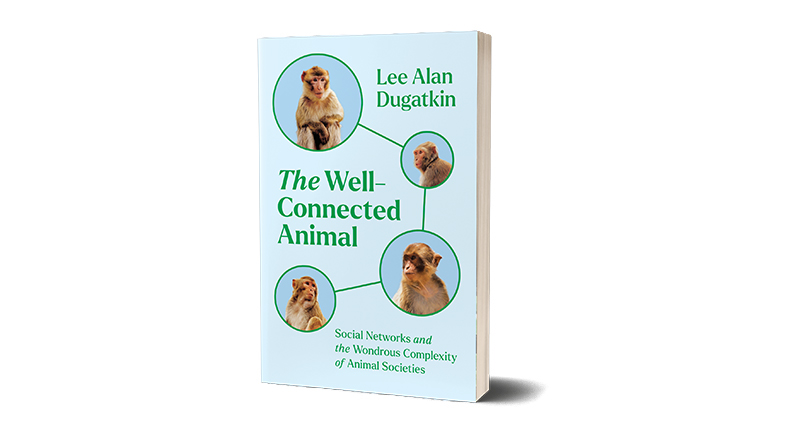Of animal societies
-
- from Shaastra :: vol 03 issue 06 :: Jul 2024

From feeding to mating, social networks touch all aspects of animal lives.
It is said that humans are social animals. In a way, the catchphrase implies sociality as a uniquely human thing. But, humans or not, animals are all social beings (maybe situationally and with exceptions, to be sure).
Humans love sharing their meals; many animals forage together. Your friend sets you up on a date; one fancy-looking bird acts as a wingman for the alpha male to secure a mate by participating in an extravagant song-and-dance duet. It takes a village to raise kids; many animals don't go it alone, either. We find safety in numbers – and so do many other animals. And while social networking in humans may have moved on to the likes of the 'Gram, animal social networks still operate the way they have for a long, long time. Now that's what separates us, not sociality.
The Well-Connected Animal is about these animal social networks and how information that can be crucial to survival flows through them. In just 10 chapters and 200-odd pages, the book covers a lot of ground – and air and water – from crop-raiding African elephants to blood-sharing vampire bats and bubble-net-feeding humpback whales. Chapters are dedicated to an aspect of animal lives involving the social network, be it predation, communication, reproduction or how new behaviours go viral.

Page after page, as the reader scrolls through these social networks, fascinating animal behaviours are uncovered. The bottlenose dolphins of Shark Bay, Australia, for instance, cushion their snouts with a marine sponge when probing the sand for fish – basically using another, living organism as a tool.
And what brings these stories to life are the people behind them and their experiences. The book regales the reader with anecdotes from the field and, while at it, underlines the challenges of working in remote forests and open waters. It offers insights into the scientific process as much as the results. With each section segueing seamlessly into another, and a selection of colourful quotes and anecdotes, it ticks all the boxes of a popular science book.
TECH-SAVVY SCIENCE
Naturally, the science of animal societies has its roots in sociology, the study of human society. It dates back to 1877, when Alfred Espinas suggested in his doctoral dissertation that sociologists must study non-human societies. "It was a radical enough idea that some… thought the topic was not science at all," as the book puts it. (Espinas was awarded the doctorate, in case you're wondering.)
But for decades, the idea remained in sociology circles, with biologists arriving on the scene only in the 1950s. By the 1960s, much before Instagram, primatologists were making 'sociograms' – an early version of social networks depicting interactions among individuals in a group. Finally, social network analysis became possible with the availability of computational power. Now, the tech-savvy field relies on GPS trackers, proximity sensors and other technologies to collect big data.
The data collected, in turn, might help in the conservation of species and perhaps to address public health issues. Researchers have studied the transmission of cancer in the Tasmanian devil, an endangered species, using social networks. To understand the mystery of how bovine tuberculosis spreads from badgers to cows in the U.K., given that the two don't come in direct contact, scientists turned to social networks once again. They looked at badger networks, cattle networks and the hubs that link them, developing a new, multilayer social network analysis in the process to deal with the complex dataset.
So, the field might yet see the infusion of more tools and techniques as researchers widen the scope to not only bigger populations of the same species but to networks across species. By the looks of it, animal social network studies might gain more followers, too.
See also:
Have a
story idea?
Tell us.
Do you have a recent research paper or an idea for a science/technology-themed article that you'd like to tell us about?
GET IN TOUCH














